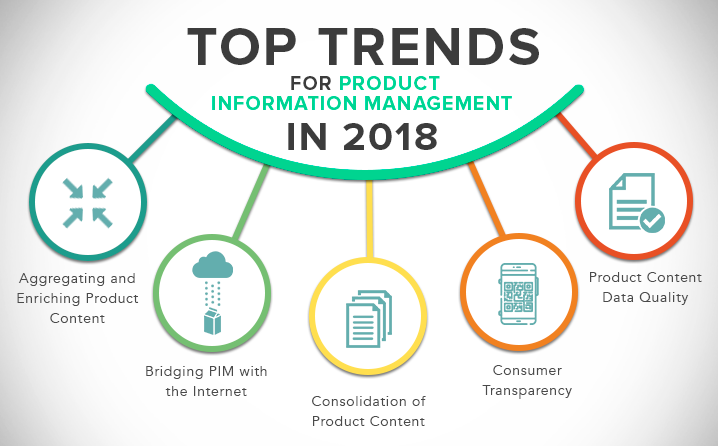Do you remember the last time you purchased something, without googling it or looking the product up online? Well, we don’t either.
The shift in retail technologies has enabled customers to gather as much information as possible. Product Information plays an important role in today’s omnichannel retail world. The rising cost of poor product information cannot be ignored by e-commerce brands and retailers today where 74% of consumers consider it important that product information is trustworthy in order to make a purchase.
Consumer decision making, as well as most retail systems, rely on access to product data. Instant availability of product information creates a favorable situation for meeting client expectations. 2017 was the year we witnessed retail giants with companies like Walmart, Amazon, Walgreens, and Target talking about the importance of product content in retail today and launching various initiatives to that effect.
We expect in 2018, product data will continue to remain a key focus area for brands as well as retailers and certain aspects of product information management to come to the forefront during the year.
So, let’s look at the top Product Information Management Trends we expect to see take priority in 2018:

Top Product Information Management Trends to expect in 2018
1. Aggregating and Enriching Product Content
Product content forms the foundation of a good customer experience. 53% of consumers state that they are unlikely to buy from a brand again after an experience with inaccurate product information. There is an increased demand for accurate product information in retail which eventually helps consumers to make sound decisions pertaining to each purchase.
With the increasing shift towards in focus on growing e-commerce and in many situations, product content serves as the most important aspect of supply-chain. As a result, we see brands and retailers increasing their efforts in aggregating and enriching product content.
2. Bridging PIM with the Internet
Having a product information management software in place for the organization is a great first step, but is that enough? A good product information management system with a strong API capable of pushing product data into the right format for data recipients and serving internet apps, mobile apps, and other channels, is the need of the hour.
This “Product Data Network” approach towards product data distribution will be one of the top product information trends in 2018. Having a PIM software and product information in one place is not enough. Brands need to bridge their PIM systems with the Internet for competitive advantage and being able to get their product content to where it’s needed instantly.
With the larger world of pseudo connected internet of things taking shape, companies need to adopt centralized product content hubs to meet the everchanging complexities of the retail ecosystem and meet the product content demands of all stakeholders.
3. Consolidation of Product Content
Product content today is extremely fragmented. The marketing department of the organization has the images, the Sales Department has the details of the products, the R&D department has the information regarding the ingredients and composition, while only the compliance department has the certifications information.
Organizations can benefit from a centralized product information management system that can be accessed by all departments to launch the campaign instead of manually transferring the data.
And not just this, every stakeholder, whether brand or retailer, has a vested interest in being able to collect & provide high-quality product content which is not only accurate but also standardized. Consolidating and creating a single source of information across the organization will likely be one of the top trends related to product information in retail through 2018.
4. Consumer Transparency
The landscape of retail has changed tremendously. Given the existing product complexities today, consumers are looking for increased transparency and regulators are more actively creating frameworks to meet this demand. Initiatives like the EU Regulation 1169, the GMA SmartLabel, FDA Labeling requirements and similar initiatives were just a few of the transparency projects organizations had to address over the past year or two.
As 2018 progresses, accurate and ready product information will be key to meeting the requirements for such initiatives and future ones that materialize over the year.
5. Product Content Data Quality
When it comes to product data quality, there are two aspects that will require attention. Correctness and Completeness. Both of these attributes impact sales. Most consumers making purchases online depend entirely on product content. Incomplete and incorrect data can cost businesses, period.
We can expect to see organizations ramping up their data quality programs, spending more time on carrying out data quality audits, implementing data validation processes and investing in platforms with built-in quality measures.
With a booming e-commerce and with the emergence of new technologies within offline retail as well, product information will emerge as a critical driver within the retail landscape. 2018 promises to be a year in which product data initiatives within the organization will take center stage.



